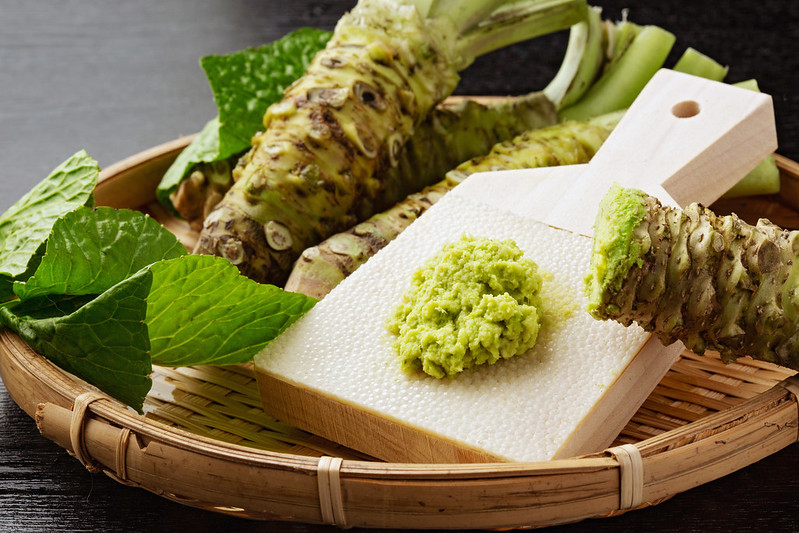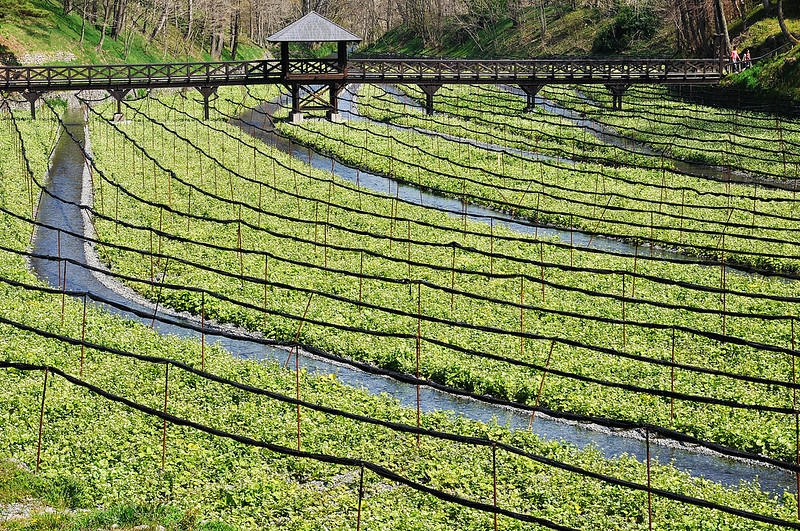
Feel the Heat of Wasabi
Wasabi is a popular Japanese condiment similar to horseradish, most commonly used when eating sashimi and sushi. It has a unique sharp taste: you can feel your sinuses clear immediately after consuming it. Wasabi is widely served in Japan and the rest of world is fast getting to appreciate its addictive flavor.
Wasabi (わさび(山葵), a plant from the Brassicaceae family that includes mustard, horseradish, and cabbages, is also known as Japanese horseradish. Typically, the stem and root are grated and used as a condiment. It has a strong, pungent flavor closer mustard rather than to the capsaicin of chili peppers. Wasabi produces vapors that stimulate the nasal passages more than the tongue. The wasabi plant usually grows along stream beds in mountain rivers in Japan, and is largely produced in Nagano Shizuoka and Shimane Prefectures.
Wasabi plant.
Wasabi has a long history documented in records written on wood that are said to date back to 685 CE. The use of wasabi initially spread as a medicinal herb but by the Kamakura period at the end of the 12th century to the 14th century, wasabi was widely used as a condiment.
Wasabi can be quite a challenge to cultivate, which makes it expensive. It can be very difficult to find real wasabi plants outside of Japan. A common alternative is horseradish, mustard starch, and green food coloring. Horseradish and wasabi have similar tastes but the distinct difference is the unique natural green color of the latter.
Daio Wasabi Farm, Azumino City.
The chemical in wasabi known as allyl isothiocyanate that is produced by hydrolisis of natural thioglucosides (conjugates of the sugar glucose, and sulfur-containing organic compounds) causes a reaction that allows the enzyme to be released when the cells rupture such as when the roots of the plant are grated. The same compound is responsible for the pungency found in horseradish and mustard.
Wasabi is a delicious condiment that can enhance the flavors of any type of dish or snack whether Japanese or not. Oishi!

